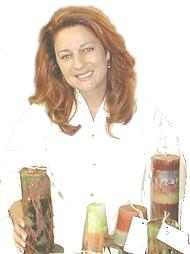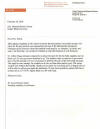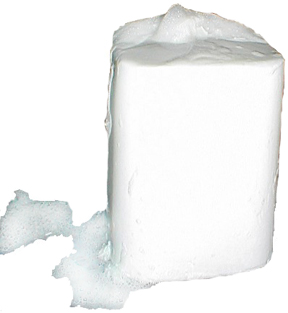|
|
||
|
Recently, we participated in a project at North Carolina State University. This is the start of a program we will be soon calling The Mabel White Foundation. We believe that learning while participating is critical to human growth and development. We are thrilled to report our models are being taught as far as the Canadian school system. Making home toiletries such as lip balm, bath seltzers and the like do have a profound impact on a child's self esteem, competency as well as a basis in math, chemistry, measurements, estimating, metric system and art. It is also one of the few areas parents can actually have fun helping. I know I used to offer to help my children with algebra and geometry, my how those subjects have changed! I was sorry I even asked. I could not help them.
The Mabel Foundation will consist of lesson plans for grades K-Graduate
school and cover a spectrum of departments. We are also compiling
projects for challenged children and this does take some thought.
We have been offering free supplies to any teacher who can create a
one or two page lesson plan around our materials, and also offer a
summary for evaluation of the students success. One of the few
criteria's is that no one has done a similar lesson plan. Any lesson plans should follow the same use of font and so on of the
sample plan. The font is Times New Roman, 12 Point. Once we compile enough lesson plans we will be
punching out the Foundation site for .edu's, .org's and home schooling
only, based on grade level. The Imhotep Academy at NC State University was doing a focus on Pharmaceutical Sciences where the students made aspirin, ointment, lip balm, and soap. These young adults had a great time and felt it was definitely worth the pursuit. That's was I am talking about! Yes! Click here to read the letter authored by Dr. Joyce Hilliard-Clark in conjunction with Dr. Lillian Riggs Johnson. I was thrilled to receive it. If you would like to develop a lesson plan for up to 60 students and be sure there is no conflict of topic, please e-mail me by clicking here. Please subject title the name of the project as well as grade level. Such as Bath Seltzer Project with math done in US and Metric form as well as explanations of chemistry. Since Easter is here I decided would love to have a basket of Bath seltzer's than eggs! I made some pastel seltzer's using the new recipe (in this issue below) and the new food color chart (also in this issue below.) The color did not ring the tub. For decor I simply push a few pre-made sugar cake decor pieces I got from the grocery store. The cake decoration section of the grocery store typically has some very pretty premade decorations. One bath bomb I put a touch of saffron on the top for a really wild and natural look. I have seen some ladies made this bombs using plastic eggs as the mold. Oh what fun we perceive when we take a moment to believe!
"Something we were withholding made us weak, until we found out it was ourselves."
~Robert Lee Frost Sugar Hair Removal by Leane Ketcherside
Now I just Sugar it off! It still stings, of course, but not as badly as waxing does, and it doesn't stink like Nair and other depilatory products. Also, with the addition of an Essential Oil or two, we can help avoid skin infections and other discomforts that usually go along with ripping the hair (and flesh) from our bodies when waxing. The recipe is simple to make and to use, by making a paste of sugar, hydrosol and lemon juice that has been heated to the softball candy stage. After the paste cools enough so it won't burn, spread it on your skin, cover it with strips of cloth, and then rip! (Just pretend you're ripping a band aid off one of the kids.) INGREDIENTS:
Combine the sugar, hydrosol and lemon juice in a microwave-safe dish. Microwave in short bursts, stirring well in between bursts, until it reaches 250◦ F on the candy thermometer. Allow the mixture to cool to 100◦ F and stir in the Essential Oils and the Germaben II E. Test the temperature on the inside of your arm. When it's still warm, but doesn't burn you, it's time to apply. Spread the cooled sugar mixture onto your skin with the popsicle sticks, working in small areas at a time. Cover with the cloth strips and let set for a few minutes, and then rip! Keep in a
sterilized Mason jar for future use. Just re-heat by placing the jar in
a pan of hot water until it warms.
"Each problem that I solved became a rule which served afterwards to
solve other problems."
"Why not go out on a limb? That's where the fruit is."
Cosmetic Chemistry All this time we have been using "Cosmetic Chemistry" and never really thought about it. Our first assumption is that oil is the ingredient that moisturizes our skin. The real truth is that the water in lotion is the ingredient that adds moisture. The oil in lotion softens the skin and retains the moisture from the water. Jojoba oil sinks into your skin very quickly, too quickly for lotion made with only jojoba oil to be able hold moisture to your skin for long, so we recommend usage at 10% of the total oils. Jojoba oil is very similar to our body's own natural sebum, and is actually a plant wax and not technically an oil. Jojoba has a very long shelf life, as well, which makes it an excellent choice for lotions. Emulsifying wax surrounds the water molecule so that the oils will bind with the water. Glycerin is a humectant. Humectants also help hold moisture to the skin. Vegetable Stearic Acid is a vegetable-based thickener often used in lotions. Citric Acid moves the ph of the lotion closer to the natural ph of your skin. Germaben II E is a preservative. Lotion is an excellent medium for the growth of yeasts and bacteria. If no preservatives were used, lotions would begin to grow mold, yeast and bacteria almost immediately. There are no "natural" preservatives available that will actually work, so don't be fooled by claims. We recommend using Germaben ll E because it works over a broad range of ph, and it is designed for emulsions that contain more than 25% oil, which many others do not. We always recommend using one percent of Germaben ll E when making lotions and creams at home, since it's not possible to create the sterile conditions of a lab in your kitchen.
Our melt and pour soap does not sweat like other melt and pour soap bases and embraces scent better. We mailed samples to our biggest melt and pour soap buyers and they did love it. One comment was "The bars harden the most overnight, but produces a finer M&P soap than they had seen. Our melt and pour soap base produces superior emollient and moisturizing qualities. When we tried using it during our first tests, we used our normal methods. In doing so, we heated the soap up too much and had real big bubbles floating around everywhere. It was great, but we learned to microwave until JUST melted. We also aimed at keeping the price VERY competitive, although we our selling it at almost cost. We want soap makers to afford the best quality and to know what that is. To purchase our new Mabel's new Melt and Pour Soap Bases click here. For a one page instruction PDF sheet on how to make this particular soap, click here. Natural Lip Balm Sweetener We have
devoted about five years to finding an all natural sweet oil for making
lip balm. To date there has been
Color Made Easy: Using Water Based Food Color by D.R. Dolen
"No one is useless in this world who lightens the burdens of another." ~Charles Dickens New Techniques and New Methods Since
spatulas sell so well for home and trade shows, many customers have been
asking for perfume testing Another awesome thing we came across are Menthol Crystals. Externally, Menthol is a very powerful ingredient. Use with prudence. It is claimed to create the "halls effect" for balm, in making cough drops, and also known as a topical anesthetic. Diluted and rubbed on the skin it creates a sensation of cold followed by numbness and anesthesia; it later penetrates the skin and paralyzes the nerve endings. Where Do I Start? That is the most frequently asked question. I feel making lip balm is a great way to get started. The Bathroom Chemist one hour DVD is almost a must to get a feel for everything we do. It would just save you so much money to know how to see things made hands on. It also saves us a ton of question we answer here at Mabel. Although, we do not mind answering questions. We do, however, prefer those new to making your own bath products view the DVD first. Bath Bombs or Bath Seltzer's After writing 22 books on like subjects, I was shocked to find out water can be used when making bath seltzer's in a small amount, and it does help to firm things up. Here would be a newer recipe to that extent:
1 cup Baking Soda
(sodium bicarbonate)
2 1/2 Tablespoons of
melted shea butter or light oil 2 Tablespoons of Polysorbate 20 The purpose of the polysorbate 20 is to make water based food dyes amenable without causing a premature reaction, meaning the bath bomb goes off during production. Combine wet ingredients and polysorbate 20 in a jar first. Put dry ingredients in a designated food processor (this will cloud your plastic forever) and drizzle the wet ingredients as you blend thoroughly. Pack into molds and allow to dry over night. You can also use a hand mixer or do this by hand. Butters In transit--shipping--they can get a little gritty. I could not understand why some of my wholesale products came in smooth, but at times gritty. Mainly in the summer I would see a change. I found out the shipping trucks can get 120 degrees inside and how to simply adjust that issue. I heat the butter up in the microwave, remove, stir well and it generally smoothes right back out. Bath Salts and Masseuse Bars We found you can make therapeutic bath salt mixtures and adorn them with a sprinkle of lavender, calendula, rose, or rosemary or other edible spices. Masseuse bars are an off shoot of the ever popular lotion bars, yet designed to melt on contact with skin during a massage. We feel this type of bar would be great with our pain recipes such as white tiger.
"Think of all the beauty still left around you and be happy." ~Anne
Frank Stimulation to Learn I started motherhood at the young age of 18. When life provided with with three daughters I took the duty as serious as a mother could. I wanted the girls to use their minds with the most potential from birth. Out of all the "learning" models out there, I found the work of Maria Montessori to be exceptional. However, I could not afford the private Montessori schools but I sure did research what techniques were used. Born in Chiaravalle,
Italy, into a home of books, music and study, Dr. Maria Montessori
pursued her dreams to become the first woman admitted to medical school
in Italy. Montessori became a Doctor of Medicine in 1896. Her
extraordinary spirit and deep belief in human potential set her on an
unexpected path. She became a world-renowned, life-long educator. ~ Maria Montessori The web really does open the doors to education if you just look. Twenty years ago I had to use the local library. I spent countless hours studying various models of education for the girls. Also thinking of their future, I found public schools near me adequate, however I was always prepared to home school if I felt it was necessary. I do not care for complete government intervention in my life and the more "rules" the school created the more I seriously considered home schooling. One example was when they removed all kids lockers at all local highshcools for safety of contraband, yet it caused my kids to have to carry very heavy back packs I could not even think of lifting. This has to hurt their spine over time. I understand even women carrying a heavy purse can affect the spine over a period of time. Why would an adolescent be any different? Back to education in general, I employed Montessori techniques, the poor parent's way--I am absolutely positive it helped all three daughters have great self esteem as well as phenomenal mathematical and reasoning capabilities. All kids are in college and two on serious scholarships for physics. I know I could never even comprehend physics, I cannot get beyond algebra 101. So the girls did not get that from me. The down side to home schooling is the children do not develop top interpersonal communication skills that they do when interacting with the public. This is the main reason I did not whip them into a home setting. Yet, I had always been prepared to do so. From birth to the day we pass we have the ability to learn. Montessori and other renowned educators are correct to say that active participation in learning, e.g.; stimulation via color, textures and exposure to new stimuli are paramount to a healthy learning appetite. Education can be enjoyed regardless of income level. Stimulation does not have to come in the form of expensive books or classes. We will be providing you more information on Montessori Techniques in future issues as well as incorporate some techniques into our lesson plans as described above being developed for the Mabel White Foundation.
Things to Grind
Then came
the McCormick line of already made little grinders with an array of
spices. Now I have a whole ensemble of just pretty grinders.
I buy my own grinders for a few reasons. One, I think it is a
waste to throw a grinder out and two, it is much more affordable in the
long run. So, I would buy 6 beautiful grinders and 6 coasters upon
which to set them. The grinders are only like $5.15 each at places
like foodservicedirect.com. I used wooden coasters that have rims.
I then pick my favorite most commonly used spice mixtures and go to
town! To give you more ideas, McCormick offers the following blends:
Italian Herb Seasoning Grinder, Pizza Seasoning Grinder, and their
Steakhouse Seasoning Grinder. So what do I put in my Chai Spice Grinder? (Powders are OK if you cannot get the seeds) 2 Tablespoons of Cinnamon 2 Tablespoons of Nutmeg 1 Tablespoon of Ginger 1 Tablespoon of Cloves 1 Tablespoon of Cardamom Seeds 1 Tablespoon of Anise or Fennel Seeds 1 Tablespoon of ground Coriander SeedsHope you enjoy this. Remember life is an open canvas with a ready palette and you are the artist!
|




 You get the picture. We all
HATE shaving, yet living with stubble or, Heaven help us, hair long
enough to braid is just...mortifying! Waxing HURTS and can be expensive,
especially when we have a professional do it. I've tried "NADS", Nair,
wax...you name it.
You get the picture. We all
HATE shaving, yet living with stubble or, Heaven help us, hair long
enough to braid is just...mortifying! Waxing HURTS and can be expensive,
especially when we have a professional do it. I've tried "NADS", Nair,
wax...you name it.  Want
the most lathering glycerin melt and pour soap on the market? We
now have it because we formulated it ourselves. With a high
Want
the most lathering glycerin melt and pour soap on the market? We
now have it because we formulated it ourselves. With a high 25% glycerin base this soap should be called "bubbles." Available
in white as well as clear, in 4 pound blocks, this soap cuts like
butter. Because it offers so many bubbles, it cannot be heated as
high in the microwave as we discuss in our former books. Our soap
produces an abundant, rich and creamy later more like cold process
soap.
25% glycerin base this soap should be called "bubbles." Available
in white as well as clear, in 4 pound blocks, this soap cuts like
butter. Because it offers so many bubbles, it cannot be heated as
high in the microwave as we discuss in our former books. Our soap
produces an abundant, rich and creamy later more like cold process
soap. no oil based sweetener available that is all natural. Saccharin
and other artificial sweeteners were the only solution. Thanks to
coconuts we have found an excellent derivative that is all natural.
Our oil extremely sweet, made with fractionated coconut oil, but does
not have any distinct coconut flavor.
no oil based sweetener available that is all natural. Saccharin
and other artificial sweeteners were the only solution. Thanks to
coconuts we have found an excellent derivative that is all natural.
Our oil extremely sweet, made with fractionated coconut oil, but does
not have any distinct coconut flavor.



